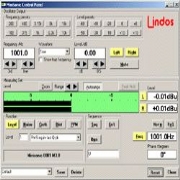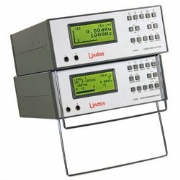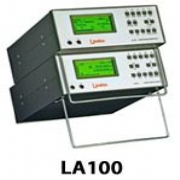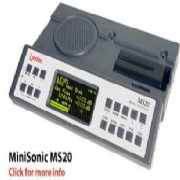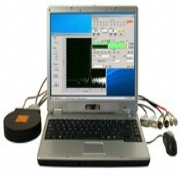About Us
About Lindos Electronics
The Lindos story began in 1979 with the design of the LA1 Audio Test Set, and founding of the business, by Pete and Tricia Skirrow. Initially conceived as a unit for aligning tape machines this turned out to be the ideal unit for testing the newly launched local radio stations throughout the UK. Links were formed with the IBA quality control section at Crawley Court (now disbanded) and many BBC and BT departments, which were to influence future work.
The Lindos Centre The success of the LA1 funded work on a new Microprocessor-controlled Audio Analyser, the LA100, which came to fruition in 1984, incorporating the novel and flexible sequence testing system that was to become widely used by broadcasters. Ahead of its time, it was one of the first battery operated products to use a microprocessor. It was also one of the first instruments ever to use a graphic LCD, which enabled it to show graphs of frequency response. Graphic LCDs are everywhere now, but in 1984, they were a brand new concept.
Once again sales took off, and this time it was television companies that brought in much of the money, though the unit was soon to become something of a standard throughout broadcasting organisations and studios worldwide.
MiniSonic MS1 In 2001 Lindos launched the MiniSonic MS1 and as before, a great deal of careful effort went into trying to get it right. For example, by incorporating a standard Sony-style lithium-ion battery fitting, any Sony lithium-ion camcorder battery can be used to power the MiniSonic. It's this sort of attention to detail, and long product life with upgradability, that has made Lindos famous.
In 2003, after completing a degree in computer science Chris Skirrow (son of Pete and Tricia) took over the running of Lindos. Since then we've seen two software products the DigiSonic and Lin4WinXP released, three complete MiniSonic MS20 revamps of the web site, LA100 Silver Upgrades become available and now, the launch of the MiniSonic MS20. It's tiny, cost-effective, and like its predecessors it's unlike anything else on the market. It's also one of the first devices to use a graphic OLED display, which are not only brighter than LCDs, but also consume much less power. In creating the MS20 we aimed to combine the convenience and simplicity of the original LA1 with some of the smartness of the LA100. I look forward to watching the MS20 become as successful as its forebears.




